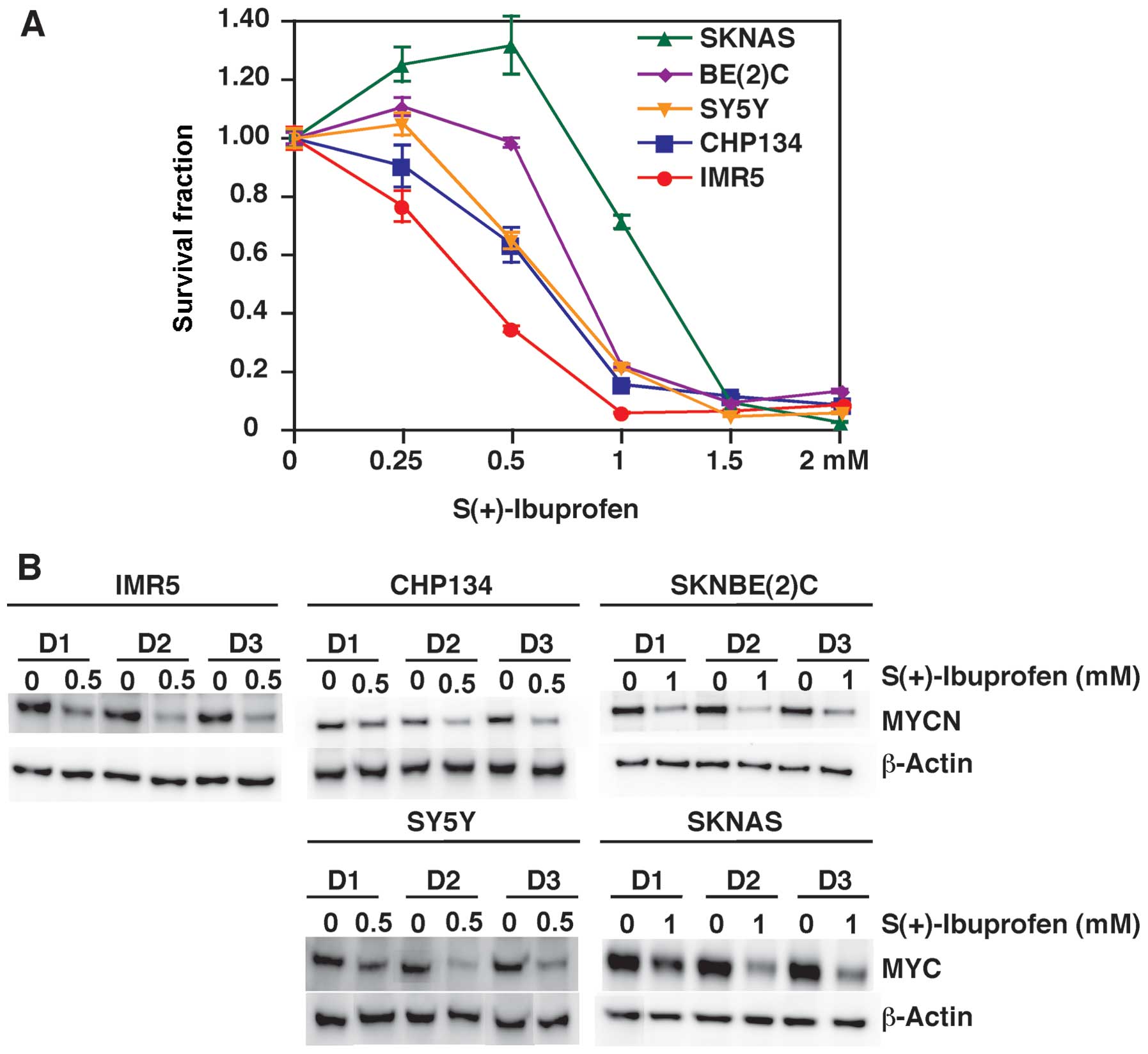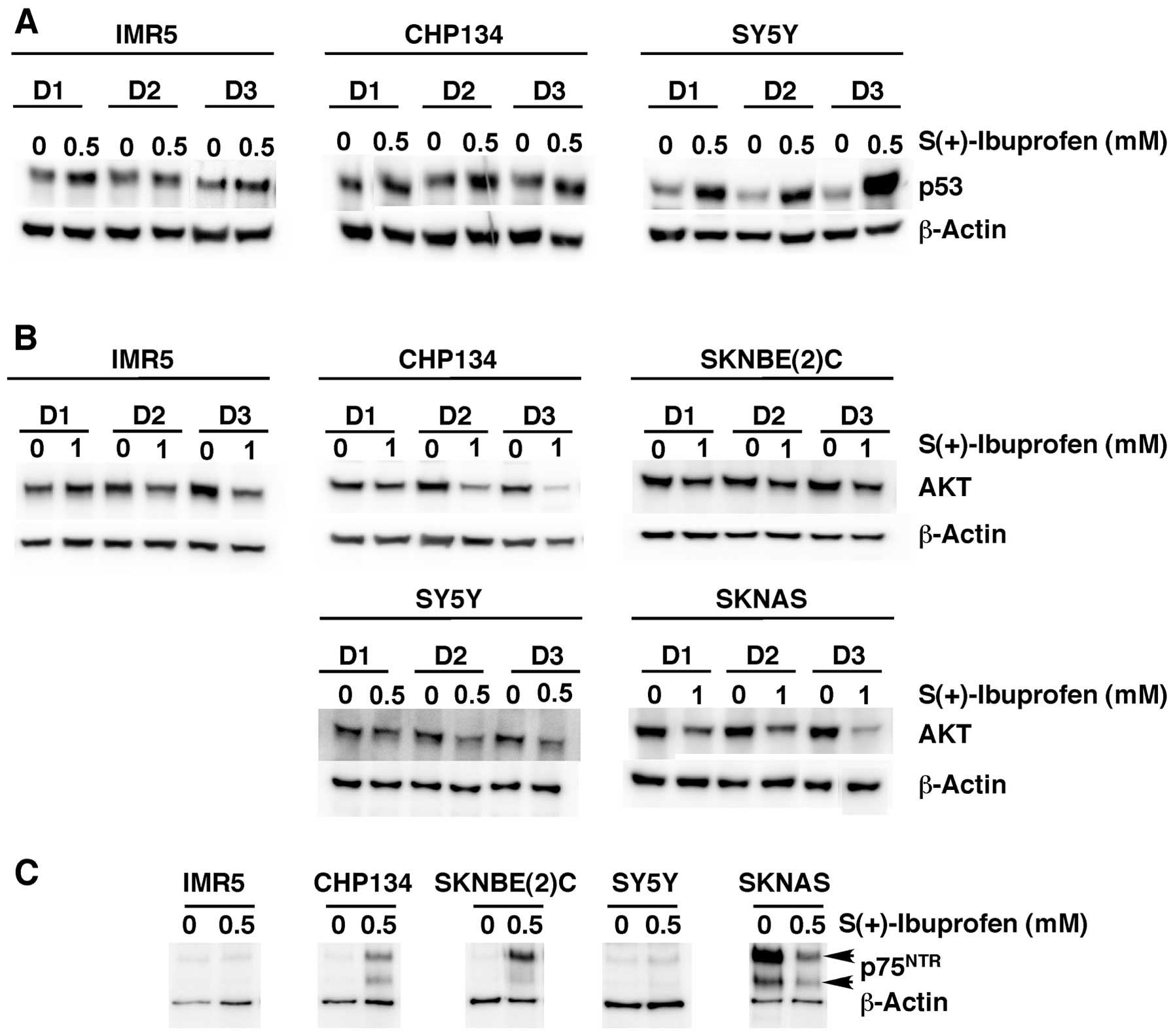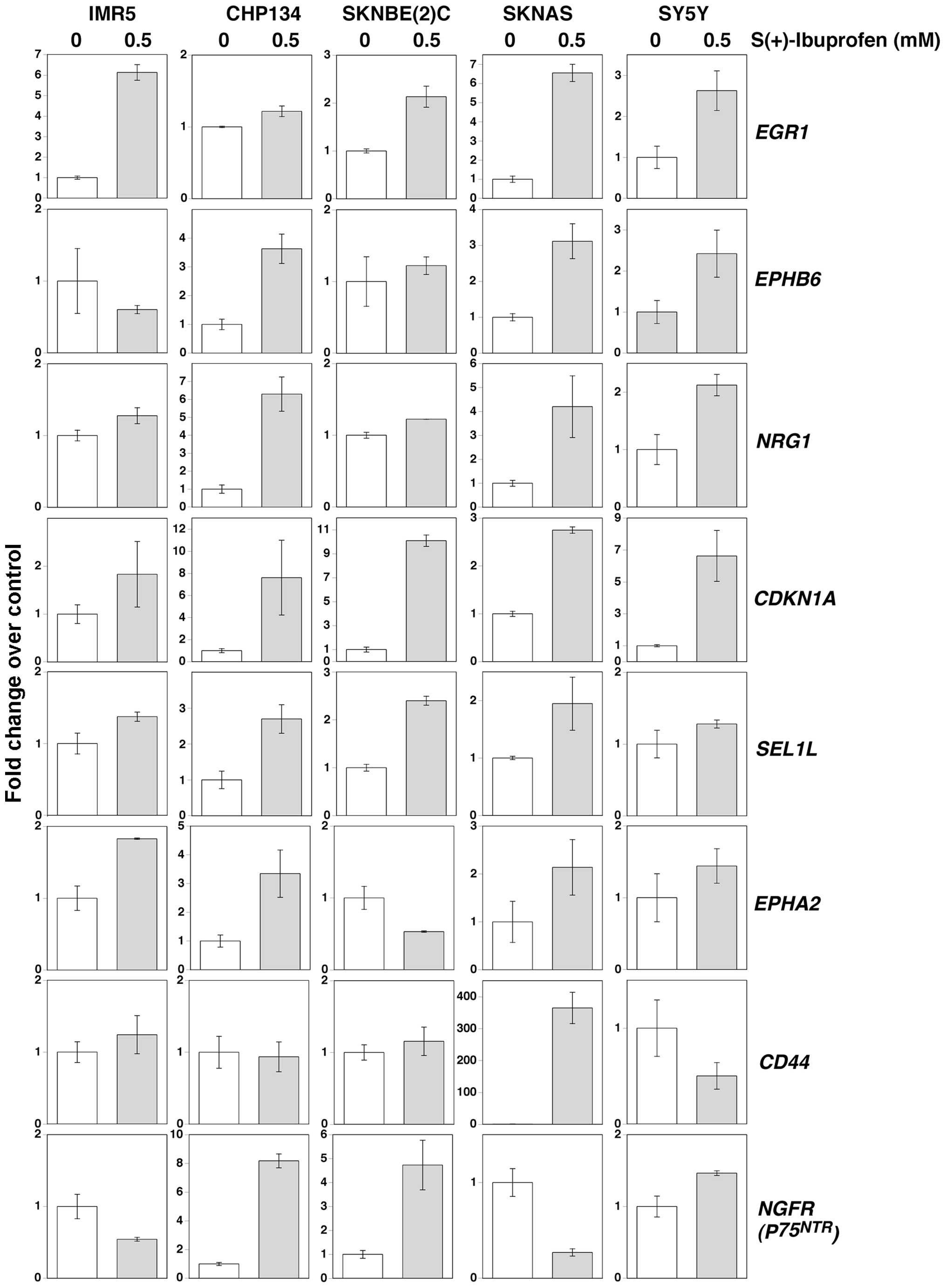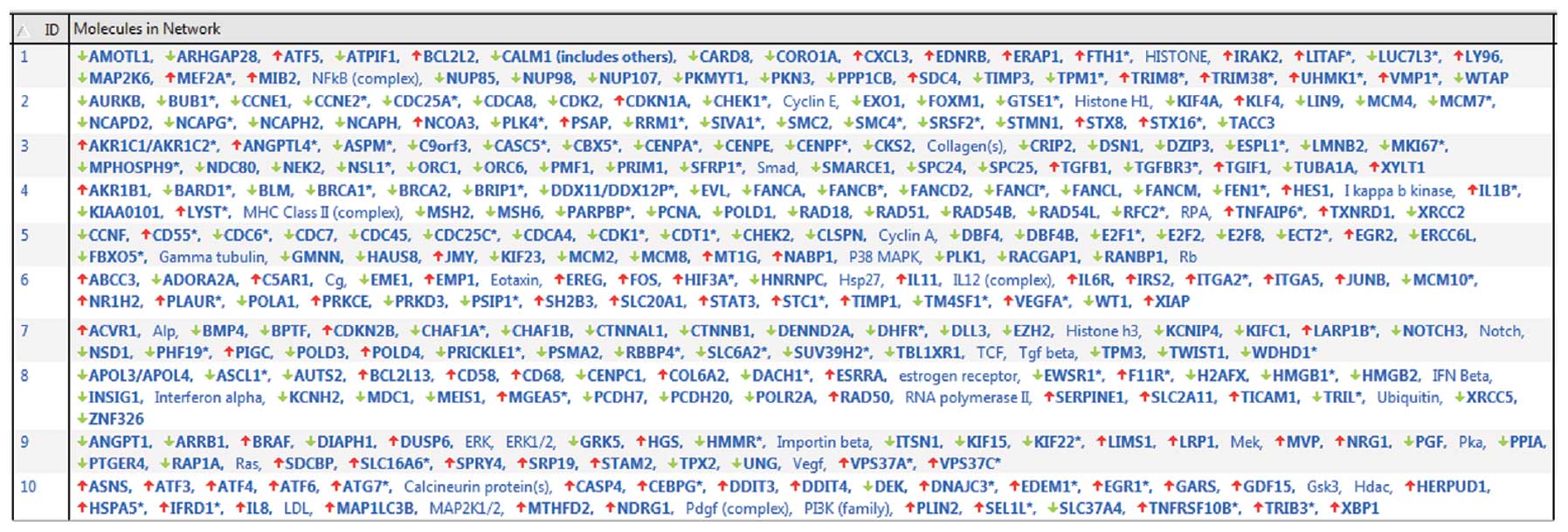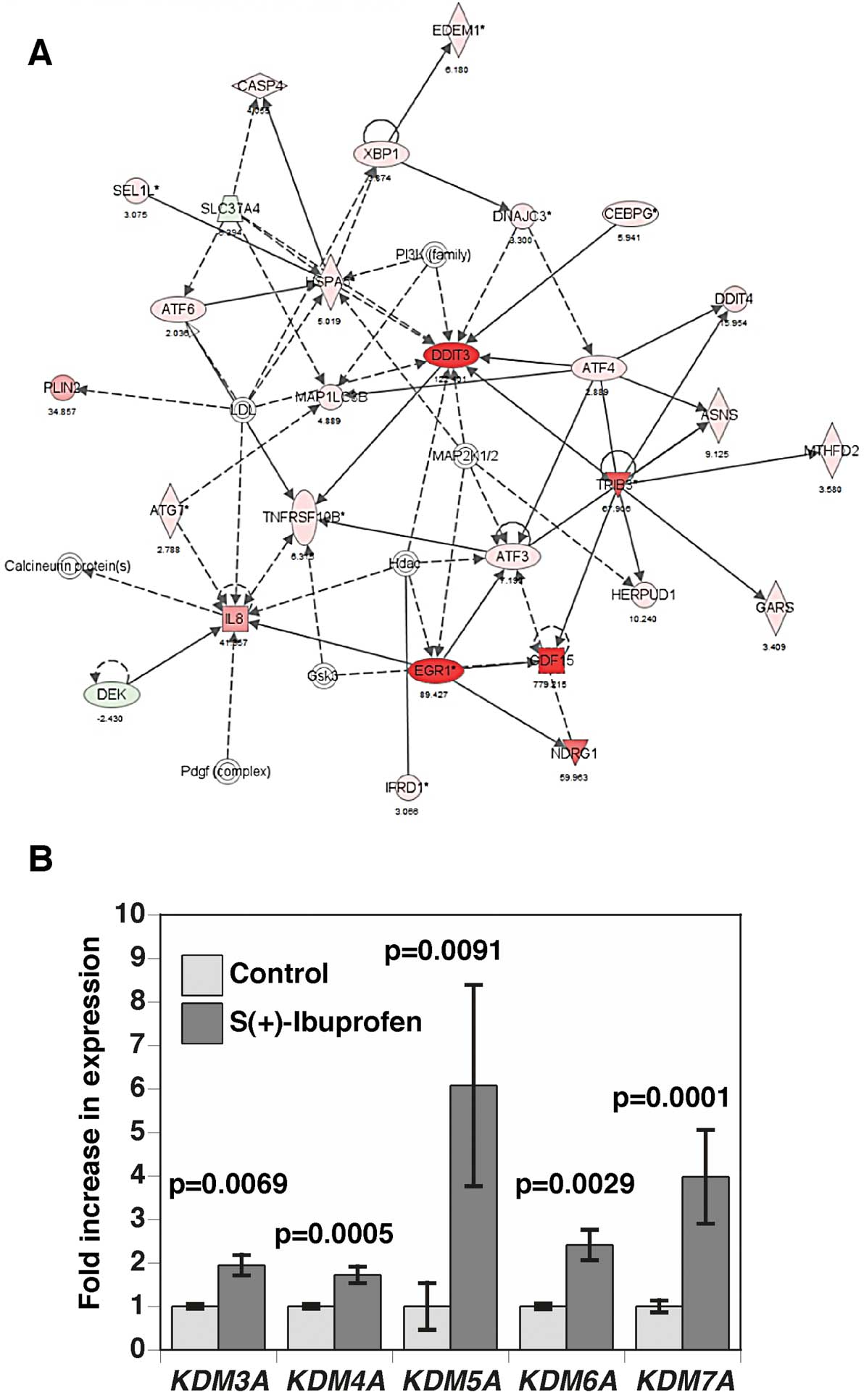|
1.
|
Cohn SL, Pearson AD, London WB, et al: The
International Neuroblastoma Risk Group (INRG) classification
system: an INRG Task Force report. J Clin Oncol. 27:289–297. 2009.
View Article : Google Scholar : PubMed/NCBI
|
|
2.
|
Tang XX, Zhao H, Robinson ME, et al:
Implications of EPHB6, EFNB2, and EFNB3 expressions in human
neuroblastoma. Proc Natl Acad Sci USA. 97:10936–10941. 2000.
View Article : Google Scholar : PubMed/NCBI
|
|
3.
|
Seeger RC, Brodeur GM, Sather H, et al:
Association of multiple copies of the N-myc oncogene with rapid
progression of neuroblastomas. N Engl J Med. 313:1111–1116. 1985.
View Article : Google Scholar : PubMed/NCBI
|
|
4.
|
Brodeur GM, Seeger RC, Schwab M, Varmus HE
and Bishop JM: Amplification of N-myc in untreated human
neuroblastomas correlates with advanced disease stage. Science.
224:1121–1124. 1984. View Article : Google Scholar : PubMed/NCBI
|
|
5.
|
Williams CS, Mann M and DuBois RN: The
role of cyclooxygenases in inflammation, cancer, and development.
Oncogene. 18:7908–7916. 1999. View Article : Google Scholar : PubMed/NCBI
|
|
6.
|
Johnsen JI, Lindskog M, Ponthan F, et al:
Cyclooxygenase-2 is expressed in neuroblastoma, and non-steroidal
anti-inflammatory drugs induce apoptosis and inhibit tumor growth
in vivo. Cancer Res. 64:7210–7215. 2004. View Article : Google Scholar : PubMed/NCBI
|
|
7.
|
Choi SY, Choi BH, Suh BC, et al:
Potentiation of PGE(2)-mediated cAMP production during neuronal
differentiation of human neuroblastoma SK-N-BE(2)C cells. J
Neurochem. 79:303–310. 2001. View Article : Google Scholar : PubMed/NCBI
|
|
8.
|
Torres J, Regan PL, Edo R, et al:
Biological effects of induced MYCN hyper-expression in
MYCN-amplified neuroblastomas. Int J Oncol. 37:983–991.
2010.PubMed/NCBI
|
|
9.
|
Regan PL, Jacobs J, Wang G, et al: Hsp90
inhibition increases p53 expression and destabilizes MYCN and MYC
in neuroblastoma. Int J Oncol. 38:105–112. 2011.PubMed/NCBI
|
|
10.
|
Dombroski BA, Nayak RR, Ewens KG, Ankener
W, Cheung VG and Spielman RS: Gene expression and genetic variation
in response to endoplasmic reticulum stress in human cells. Am J
Hum Genet. 86:719–729. 2010. View Article : Google Scholar : PubMed/NCBI
|
|
11.
|
Tweddle DA, Malcolm AJ, Bown N, Pearson AD
and Lunec J: Evidence for the development of p53 mutations after
cytotoxic therapy in a neuroblastoma cell line. Cancer Res.
61:8–13. 2001.PubMed/NCBI
|
|
12.
|
Goldschneider D, Horvilleur E, Plassa LF,
et al: Expression of C-terminal deleted p53 isoforms in
neuroblastoma. Nucleic Acids Res. 34:5603–5612. 2006. View Article : Google Scholar : PubMed/NCBI
|
|
13.
|
Tang XX, Evans AE, Zhao H, et al:
High-level expression of EPHB6, EFNB2, and EFNB3 is associated with
low tumor stage and high TrkA expression in human neuroblastomas.
Clin Cancer Res. 5:1491–1496. 1999.
|
|
14.
|
Schmittgen TD and Livak KJ: Analyzing
real-time PCR data by the comparative C(T) method. Nat Protoc.
3:1101–1108. 2008. View Article : Google Scholar : PubMed/NCBI
|
|
15.
|
Wu Z, Irizarry RA, Gentleman R,
Martinez-Murillo F and Spencer F: A model-vased background
adjustment for oligonucleotide expression arrays. J Am Statist
Assoc. 99:909–917. 2004. View Article : Google Scholar
|
|
16.
|
Khwaja F, Allen J, Lynch J, Andrews P and
Djakiew D: Ibuprofen inhibits survival of bladder cancer cells by
induced expression of the p75NTRtumor suppressor
protein. Cancer Res. 64:6207–6213. 2004. View Article : Google Scholar : PubMed/NCBI
|
|
17.
|
Quann EJ, Khwaja F, Zavitz KH and Djakiew
D: The aryl propionic acid R-flurbiprofen selectively induces
p75NTR-dependent decreased survival of prostate tumor cells. Cancer
Res. 67:3254–3262. 2007. View Article : Google Scholar : PubMed/NCBI
|
|
18.
|
Kung B, Zhao H, Hicks SL, Tang XX and
Ikegaki N: Biological significance of EPHA2 expression in
neuroblastoma. Int J Oncol. 35:845–850. 2009.PubMed/NCBI
|
|
19.
|
Ikegaki N, Shimada H, Fox AM, et al:
Transient treatment with epigenetic modifiers yields stable
neuroblastoma stem cells resembling aggressive large-cell
neuroblastomas. Proc Natl Acad Sci USA. 110:6097–6102. 2013.
View Article : Google Scholar
|
|
20.
|
Phleps W: Overview on clinical data of
dexibuprofen. Clin Rheumatol. 20(Suppl 1): S15–S21. 2001.
View Article : Google Scholar : PubMed/NCBI
|
|
21.
|
Fredlund E, Ringner M, Maris JM and
Pahlman S: High Myc pathway activity and low stage of neuronal
differentiation associate with poor outcome in neuroblastoma. Proc
Natl Acad Sci USA. 105:14094–14099. 2008. View Article : Google Scholar : PubMed/NCBI
|
|
22.
|
Tang XX, Zhao H, Kung B, et al: The MYCN
enigma: significance of MYCN expression in neuroblastoma. Cancer
Res. 66:2826–2833. 2006. View Article : Google Scholar : PubMed/NCBI
|
|
23.
|
Wang LL, Suganuma R, Tovar JP, et al:
Neuroblastoma, undifferentiated subtype: a report from the
Children’s Oncology Group. Pediatric Dev Pathol. (In press).
|
|
24.
|
Tang XX, Robinson ME, Riceberg JS, et al:
Favorable neuroblastoma genes and molecular therapeutics of
neuroblastoma. Clin Cancer Res. 10:5837–5844. 2004. View Article : Google Scholar : PubMed/NCBI
|
|
25.
|
Dudek H, Datta SR, Franke TF, et al:
Regulation of neuronal survival by the serine-threonine protein
kinase Akt. Science. 275:661–665. 1997. View Article : Google Scholar : PubMed/NCBI
|
|
26.
|
Kauffmann-Zeh A, Rodriguez-Viciana P,
Ulrich E, et al: Suppression of c-Myc-induced apoptosis by Ras
signalling through PI(3)K and PKB. Nature. 385:544–548. 1997.
View Article : Google Scholar : PubMed/NCBI
|
|
27.
|
Zong WX, Li C, Hatzivassiliou G, et al:
Bax and Bak can localize to the endoplasmic reticulum to initiate
apoptosis. J Cell Biol. 162:59–69. 2003. View Article : Google Scholar : PubMed/NCBI
|
|
28.
|
Scorrano L, Oakes SA, Opferman JT, et al:
BAX and BAK regulation of endoplasmic reticulum Ca2+: a
control point for apoptosis. Science. 300:135–139. 2003. View Article : Google Scholar : PubMed/NCBI
|
|
29.
|
Conacci-Sorrell M, Ngouenet C and Eisenman
RN: Myc-nick: a cytoplasmic cleavage product of Myc that promotes
alpha-tubulin acetylation and cell differentiation. Cell.
142:480–493. 2010. View Article : Google Scholar : PubMed/NCBI
|
|
30.
|
Conacci-Sorrell M and Eisenman RN:
Post-translational control of Myc function during differentiation.
Cell Cycle. 10:604–610. 2011. View Article : Google Scholar : PubMed/NCBI
|
|
31.
|
Tsutsumi S, Gotoh T, Tomisato W, et al:
Endoplasmic reticulum stress response is involved in non-steroidal
anti-inflammatory drug-induced apoptosis. Cell Death Differ.
11:1009–1016. 2004. View Article : Google Scholar : PubMed/NCBI
|
|
32.
|
Shan J, Fu L, Balasubramanian MN, Anthony
T and Kilberg MS: ATF4-dependent regulation of the JMJD3 gene
during amino acid deprivation can be rescued in Atf4-deficient
cells by inhibition of deacetylation. J Biol Chem. 287:36393–36403.
2012. View Article : Google Scholar : PubMed/NCBI
|
|
33.
|
Ikegaki N, Bukovsky J and Kennett RH:
Identification and characterization of the NMYC gene product in
human neuroblastoma cells by monoclonal antibodies with defined
specificities. Proc Natl Acad Sci USA. 83:5929–5933. 1986.
View Article : Google Scholar : PubMed/NCBI
|















